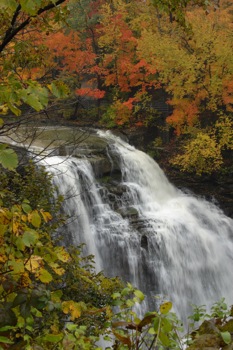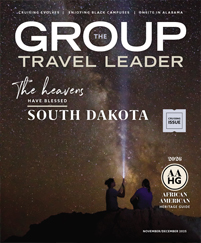 Photo Courtesy Cuyahoga National Park
Photo Courtesy Cuyahoga National Park
As you walk along a former towpath of a 19th-century canal in northeastern Ohio amid a landscape that alternates from deep forests to rolling hills to open farmland, it’s hard to image that just minutes away is the hustle and bustle of two of the state’s largest cities: Cleveland and Akron.
“Here, in the middle of two large cities, you can come into our park and be on a trail and encounter deer and all different types of birds. There is solitude and silence,” said Mary Pat Doorley, interpretive operations supervisor for the Cuyahoga Valley National Park.
There are several ways to experience the national park, which covers 33,000 acres along a 22-mile stretch of the Cuyahoga River.
“Our biggest resource is the towpath trail,” said Doorley. “It is a multiuse crushed limestone trail for biking, hiking and walking.”
The trial, the same path used by mules to pull boats loaded with goods and passengers on the Ohio and Erie Canal, is level and hard-packed for ease of use by bicycles, wheelchairs and strollers.
“In our park, you can hike 19 miles of that trail,” said Doorley. “In the summer, we do a demonstration on how a lock was used. The rest of the canal has been let go to natural areas, but you can see parts of it.”
The Towpath Trail is open 24 hours, allowing opportunities to also experience it at night.
The Cuyahoga Valley Scenic Railway provides a different way to see the park, and free audio tours tell about the park and its history.
“You will see a lot of natural forests and wildlife,” said Doorley. “You may see bald eagles and beaver, and you definitely will see blue herons. You go right by a heronry. If you are on a bus, you can also see it.
“We also have the Cuyahoga River, which has made a comeback from the 1970s. That is why there is this much wildlife.”
The park also has a system of backcountry trails in addition to the towpath with a range of difficulty. However, Doorley said none is overly strenuous.
“This is definitely not Yellowstone. What is intense here is beginner there,” she said.
A two-year-old program that has been a big success is Bike Aboard, which allows people to take their bicycles one way on the railroad.
“You can put your bike on the train and go one way and bike back to your car or bus,” said Doorley. “It has been well received. It is a great way to see the park and get great exercise.”
The cost is only $2 per person, and you can catch the train at any boarding station. The train staff will load your bicycle.
“Groups will love a stop at Brandywine Falls on the way in or out of the park,” said Brown. “It is a 60-foot-tall waterfall framed in the fall by blazing reds, oranges and yellows on any given year.
“In the winter, the National Park Service doesn’t plow the towpath to permit cross-country skiing,” she said. “The park also rents snowshoes.”
Brown said the canal towpath runs through “a couple of very New England-type small towns — Peninsula, where you can rent bicycles, and Boston Mill Station, where a canal boat-building museum is located along with the visitor center and general store.”









